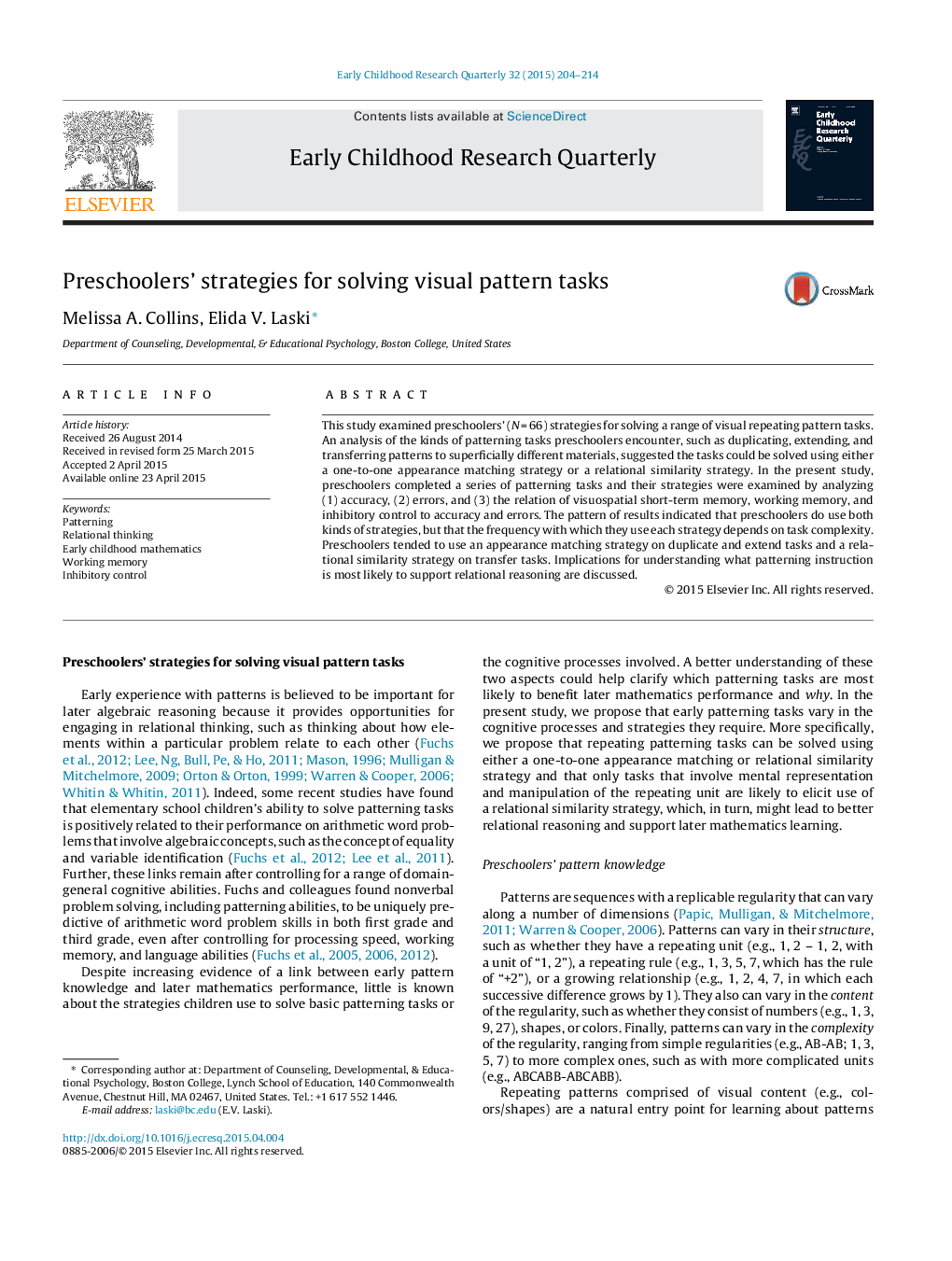| Article ID | Journal | Published Year | Pages | File Type |
|---|---|---|---|---|
| 353726 | Early Childhood Research Quarterly | 2015 | 11 Pages |
•Preschoolers use appearance matching and relational strategies on pattern tasks.•Strategy varies by task and children's working memory and inhibitory control.•Relational strategy is used most when transferring pattern units to new materials.
This study examined preschoolers’ (N = 66) strategies for solving a range of visual repeating pattern tasks. An analysis of the kinds of patterning tasks preschoolers encounter, such as duplicating, extending, and transferring patterns to superficially different materials, suggested the tasks could be solved using either a one-to-one appearance matching strategy or a relational similarity strategy. In the present study, preschoolers completed a series of patterning tasks and their strategies were examined by analyzing (1) accuracy, (2) errors, and (3) the relation of visuospatial short-term memory, working memory, and inhibitory control to accuracy and errors. The pattern of results indicated that preschoolers do use both kinds of strategies, but that the frequency with which they use each strategy depends on task complexity. Preschoolers tended to use an appearance matching strategy on duplicate and extend tasks and a relational similarity strategy on transfer tasks. Implications for understanding what patterning instruction is most likely to support relational reasoning are discussed.
